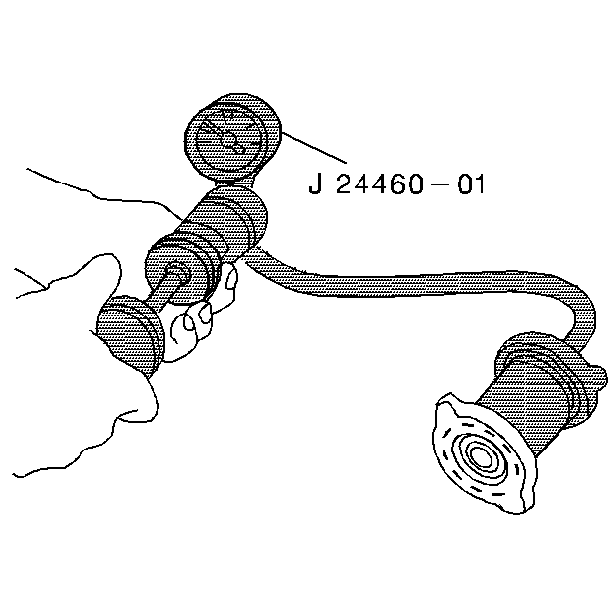For 1990-2009 cars only
Tools Required
| • | J 24460-01 Cooling System Tester |
| • | J 41336-2 Radiator Test Adapter |
| • | J 41336-1 Radiator Cap Test Adapter |
Leak Testing Procedure (On Vehicle)
- After the system has cooled, remove the radiator pressure cap.
- Connect the cooling system tester, J 24460-01 , and the adapter, J 41336-2 , to the radiator neck.
- Apply normal system operating pressure. Do not exceed 138 kPa (20 psi).
- The system should hold pressure for about two minutes. Watch the gauge needle for an indication of a leak. Examine all cooling system connections and components, including the radiator and the heater core, for leaking coolant.
- Tighten the hose connections and/or repair as required.
- Test the radiator cap with J 24460-01 andJ 41336-1 in order to ensure that the cap maintains the correct pressure.
- Slowly apply pressure. If the cap fails to hold 103 kPa (15 psi), replace the cap.
Caution: Under pressure, the temperature of the solution in the radiator can be considerably higher, without boiling. Removing the radiator cap while the engine is hot (pressure is high), will cause the solution to boil instantaneously, with explosive force. The solution will spew out over the engine, fenders, and the person removing the cap. Serious bodily injury may result. Flammable antifreeze, such as alcohol, is not recommended for use at any time. Flammable antifreeze could cause a serious fire.
Caution: In order to help avoid being burned, do not remove the radiator cap while the engine and the radiator are hot. Scalding fluid and steam can be blown out under pressure if the cap is removed too soon.

